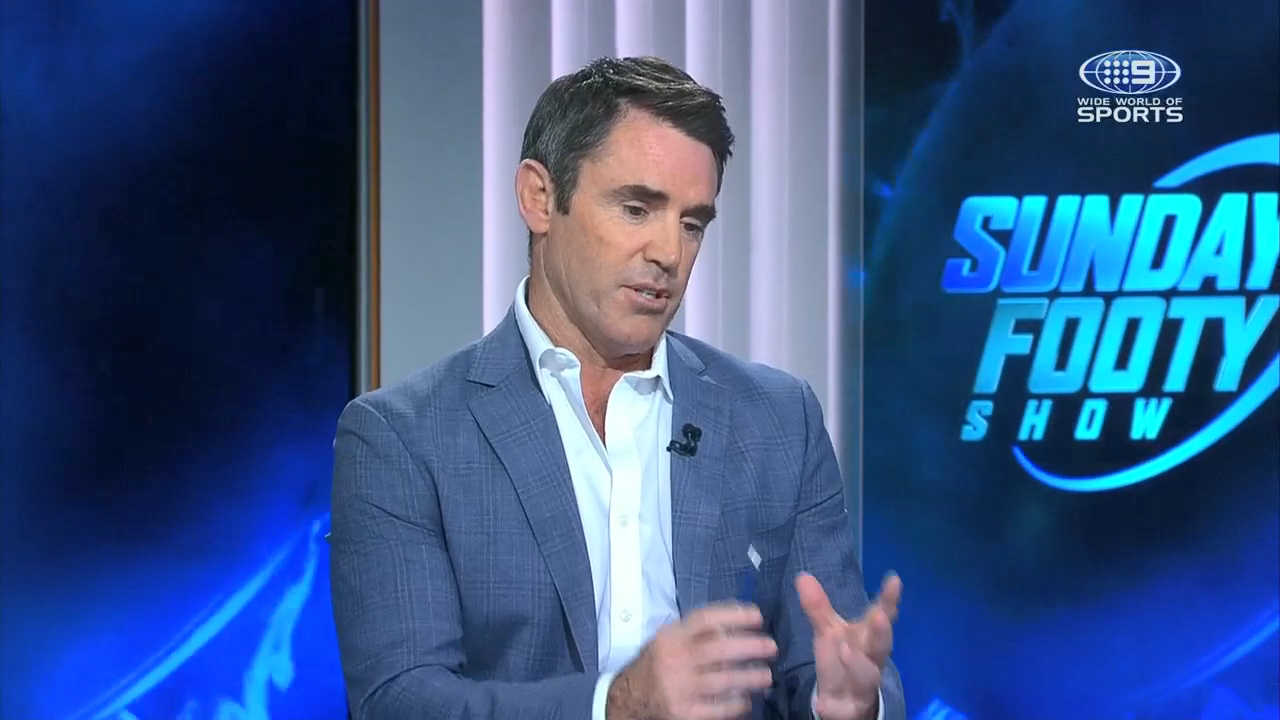For anyone who thinks the game is going to get quicker with one referee and the six again rule change, I think you're in for a shock when the NRL season resumes next week.
Like I said in my column last week, for every action there is a reaction and I think it's inevitable that the game will get a little bit slower under one referee.
The six again rule will do nothing to stop the wrestle in rugby league but at least Peter V'landys has signalled he's not going to stop there.

There's now talk that he will look to reduce the interchange for the 2021 season. I've been a supporter of reduced interchange for years and I think bringing it down to six will make a difference in bringing fatigue back into the game and give the little men the chance to decide results.
Defending is the toughest part of the game so taking rest away from the players who defend in the middle of the park will stop them dominating the contact areas.
Realistically under the current rules wrestling is a part of the game and will remain so. If you're a defender who can make good contact with the ball carrier, twist him to the ground and get him on his back you're going to get time in the play the ball.
The only way to stop defenders from using their wrestling techniques is by winning your run, poking your head through the line and falling in a dominant position with the ball.
Six again and one referee isn't going to change that and I actually think that with one referee the teams that can wrestle effectively are going to get an advantage out of it.
In an ideal world it would be great to bring in reduced interchange at the same time as we go back to one referee but there's no way you could make that change with two weeks' notice.
To be clear, I'd love to see the interchange reduced but the timing has to be right. If you made that change now you'd be inviting the critics to write this season off as illegitimate and there would be genuine fears that you were putting the players in harm's way because they wouldn't have time to train for it.
But if they announce that they're going to reduce the interchange in the off-season you take all the excuses away.
One of the biggest reasons that I'm a supporter of reduced interchange is that the HIA has basically given every side an extra couple of interchanges in each game.

It might sound cynical but I can guarantee that every coach in the NRL is using the HIA to their advantage.
If they did an analysis of how many players go off for a concussion test and pass the test and end up back on the field, there'd be far more of those cases than cases of players who fail the test and have to stay off.
In other words, if a team gets a HIA that's two extra interchanges they can use on top of the eight that they have to play with already.
Bringing the interchange down to six would be a positive step to combat that, but I think they also need to have a look at the concussion protocols as well.
It might be controversial but I think we need to look at bringing in a rule where players brought off for a HIA can't be allowed back on the field. The NRL may get to that point if they're fairdinkum about cracking down on head knocks. That's a discussion for another day.
What they'll be looking at when they consider reducing the interchange is what flow-on effects that will have. I can't see too many negatives from it.
Some of the bigger guys may have to trim down but if we're talking about the wrestle, tiredness is the key to stopping it.
If you're that little bit more tired as a defender it's just natural that you won't be able to execute the wrestle as well.
How many times did we see Andrew Johns carve up a bigger, slower forward at the back end of halves? We've sort of lost that a little bit.
Part of the reason for that is that the bigger guys have become more athletic, so they're not feeling the affects of fatigue in the same way as the front-rowers did 20 or 30 years ago.

Look at guys like David Fifita, Pangai Junior, Payne Haas, these younger forwards starting to dominate the competition. They're so big, so strong, but they're so athletic and so fit these days.
When they're only playing 20 minutes at a time they're hard to stop, they're really hard to stop. If they've all of a sudden got to play in 30 minute stints, that last 10 minutes that they're on the field may slow them down a little bit and bring the little men back into the game.
You want to see the small men taking on the bigger men through the middle of the ruck, it brings the ball players back into the game; more options out of dummy half, more to play with for the halfback and it might address the balance so that the game rewards creativity, not just power.
Traditionally that's what the game was all about. You've got to remember that the interchange blew out at around the time of Super League, before that it used to be once you're off, you're off.
We're slowly getting back to more of a war of attrition and reducing the interchange to six would be another step in the right direction.
from WWOS http://wwos.nine.com.au/nrl/paul-gallen-column-reducing-interchange-for-2021/cd052426-0a5f-42e4-af4e-90fb29557d49


0 Comments